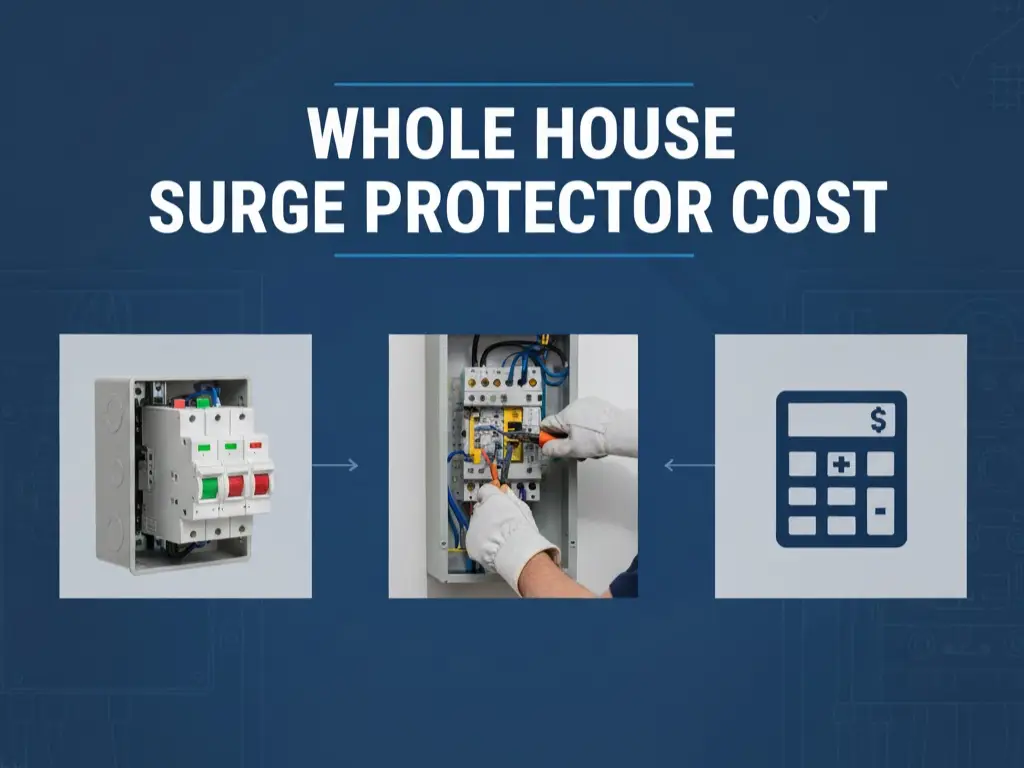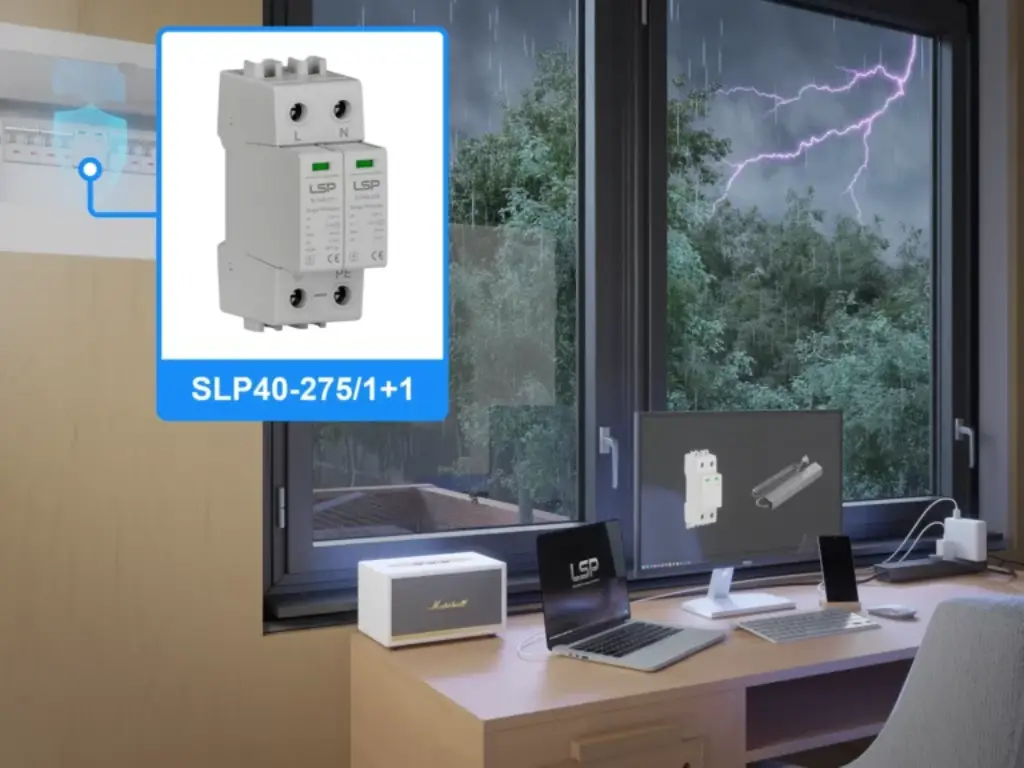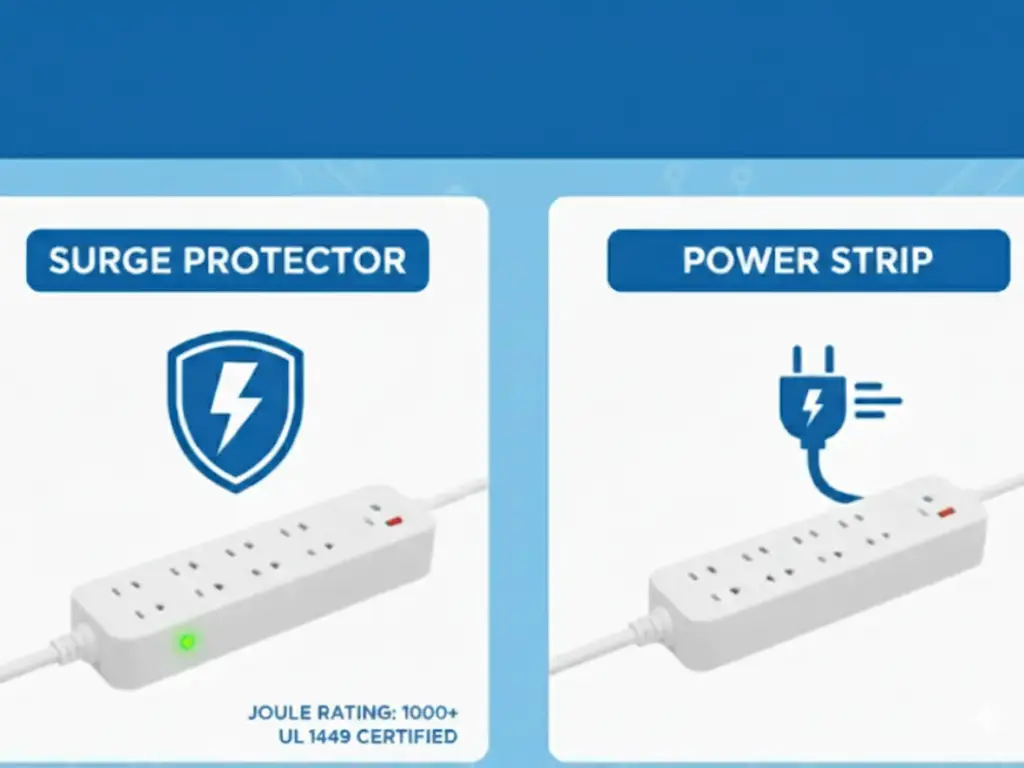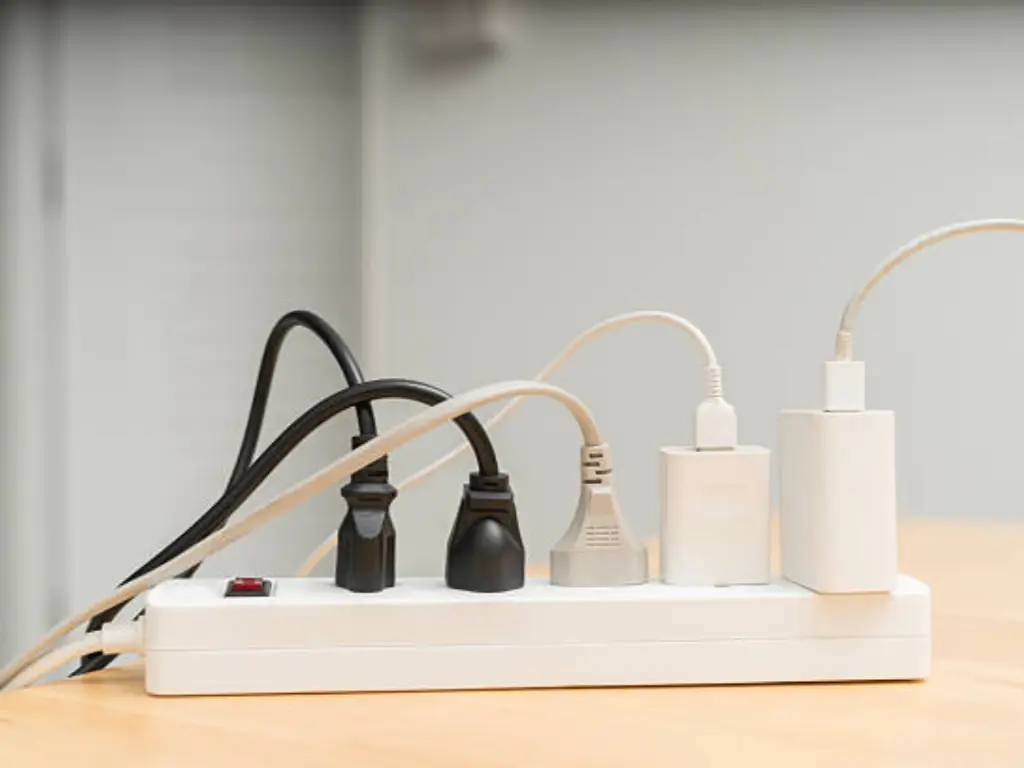The internet provides a great range of information on the price of a whole housesurge protector, but there is a lot of conflicting information where the numbers are given with little background. In one article, the price is quoted as something that appears to be too low; in another, it is a figure that appears to be too high. However, you seldom hear from the individuals who design, construct, and test these critical devices on a daily basis. As a manufacturer of Surge Protection Devices (SPDs), we would like to present you with something new: an insider’s guide. We are giving you a look behind the curtain to go beyond the mere question of how much and go deep into the “why“—protection from damaging power surges. This is the manual for those who would like to understand the investment in their home’s electrical system, not just the price tag, and gain the peace of mind that comes with it.
Let’s Talk Terminology: What We Call a “Surge Protection Device” (SPD)
It is important that we begin on the same page, speaking the language of the industry before we can have a meaningful discussion about cost. Although the name “whole house surge protector” is quite descriptive and is commonly used, in the engineering laboratory and on the factory floor we call them by their technical name: Surge Protective Devices, or SPDs.
In particular, the surge protection device to be mounted on your electrical panel is Type 1 or Type 2SPD. A Type 1 SPD may be mounted before the main breaker in your service entrance, providing the initialsurge protection against huge external surges, such as those from lightning strikes. The most popular residential option is a Type 2SPD, which is mounted on the roadside of the main breaker inside your panel.
Why does this matter? Because thinking in terms of “SPDs” is the first step towards thinking like a professional. It instantly puts the device into a bigger context of electrical safety and makes you realize its particular purpose. It is not merely a single protector, but a basic element of a contemporary, robust electrical system. With the right terminology, you are able to ask better questions and make better decisions. This is your first piece of insider knowledge.
The Real Cost Breakdown: What You’re Actually Paying For
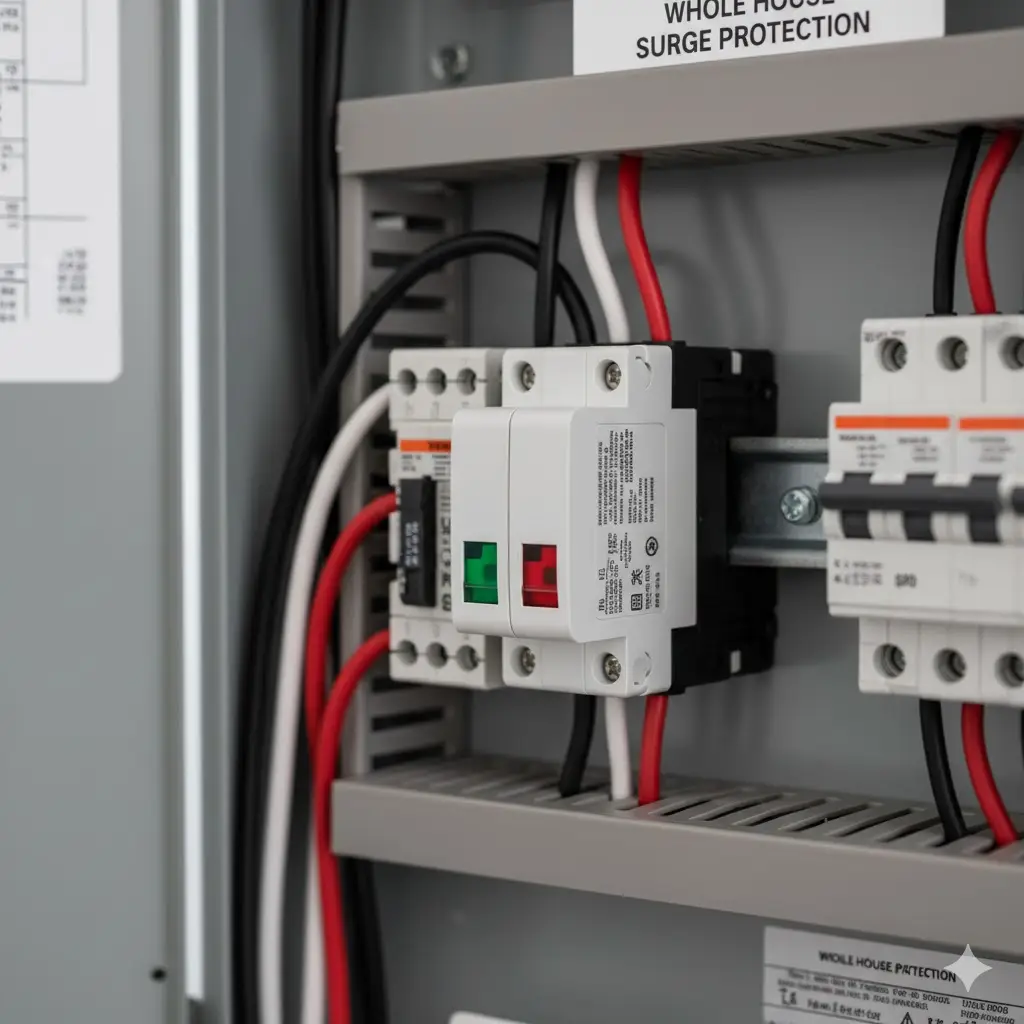
When you ask about the cost of a whole house surge protector, you’re really asking about three distinct components: the device itself, the skilled labor for professional installation, and the peace of mind that comes with the protection it offers. To give you a transparent, real-world budget, we need to break down each of these elements. This is the real cost, stripped of marketing fluff and vague estimates.
The Device Itself: Secrets Behind the Price Tag
Walk into any large hardware store or browse online, and you’ll see Type 2 Surge Protective Devices (SPDs) priced anywhere from $50 to over $300. At first glance, they all seem to be the same simple gray boxes. Yet to manufacturers and engineers, the differences go far beyond appearance — the price is a direct reflection of the quality, durability, and reliability of the components hidden within.
The distinction lies in the philosophy behind each design. Lower-cost SPDsare often built to meet the minimum required standards — functional, but not engineered for endurance. Premium units, by contrast, are constructed for longevity and consistency, ensuring years of protection even under heavy surge exposure.
A major part of this cost difference comes down to component quality, assembly precision, and enclosure design. High-end SPDs use metal housings for superior heat dissipation and physical robustness, while budget models may rely on cheaper plastics that trap heat and accelerate component degradation. A well-designed enclosure is not only more durable but also helps manage internal temperatures, prolonging the life of sensitive components.
The MOV: Heart of the SPD
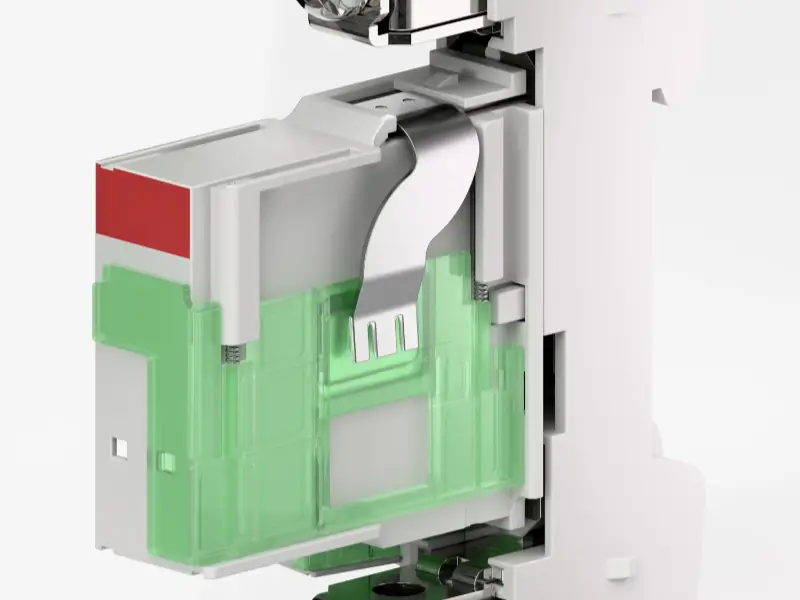
*We use LKD-brand MOVs, with stable parameters and a 5+ year lifespan after the 8/20 test.
At the core of every surge protective device lies the Metal Oxide Varistor (MOV) — a voltage-sensitive semiconductor that determines how well the SPD performs. Under normal operating voltage, the MOV remains inactive, allowing current to flow unimpeded. But when a dangerous voltage spike occurs, it reacts instantly, diverting excess energy to the ground to protect every connected appliance and circuit downstream.
The size, quality, and surge capacity of the MOV — along with its thermal protection design — may be the single largest factors affecting both the price and performance of an SPD.
- Low-cost SPDs employ smaller, lower-grade MOVs. These can handle only a few small surges or one significant event before deteriorating.
- High-end SPDs use larger, better-insulated MOVs with integrated thermal disconnects, capable of enduring multiple surges over many years without notable degradation.
Different models also vary in their amp ratings and warranty coverage, both of which serve as indicators of build quality and expected lifespan. Below is a summary of typical Type 2 SPD pricing and characteristics across major brands:
| Brand | Typical Price Range (USD) | Enclosure Material | Typical Warranty | MOV Specifications & Features | Notes |
| Leviton | $120 – $250 | Metal (NEMA 4X) | 10 years | Large, thermally protected MOVs; residential & light commercial | High reliability; easy installation |
| Eaton | $100 – $220 | Metal / Plastic | 5 – 10 years | Multi-stage MOVs with LED status indicators | Designed for Eaton panels |
| Siemens | $90 – $200 | Metal (NEMA 3R / 4X) | 10 years | High-energy MOVs; supports parallel installation | Excellent cost-to-performance ratio |
| Square D (by Schneider) | $150 – $300 | Metal (NEMA 4X) | 10 years | Industrial-grade MOVs; built-in status monitoring | Top-tier reliability for heavy-duty use |
| Intermatic | $70 – $180 | Plastic / Metal | 5 – 10 years | Mid-range MOVs with thermal fuse protection | Budget-friendly; ideal for moderate loads |
*This data is compiled from various online sources.
When you compare a $70 SPD with a $250 model from a reputable brand, you’re not simply paying for a name. You’re paying for premium-grade components, superior thermal management, enhanced reliability, and a longer service life. In essence, the higher price represents more than hardware — it represents a design philosophy centered on resilience and long-term protection. The result is peace of mind: a safeguard that stands strong for a decade, not just a season.
The Installation Fee: What a Fair Electrician Quote Looks Like
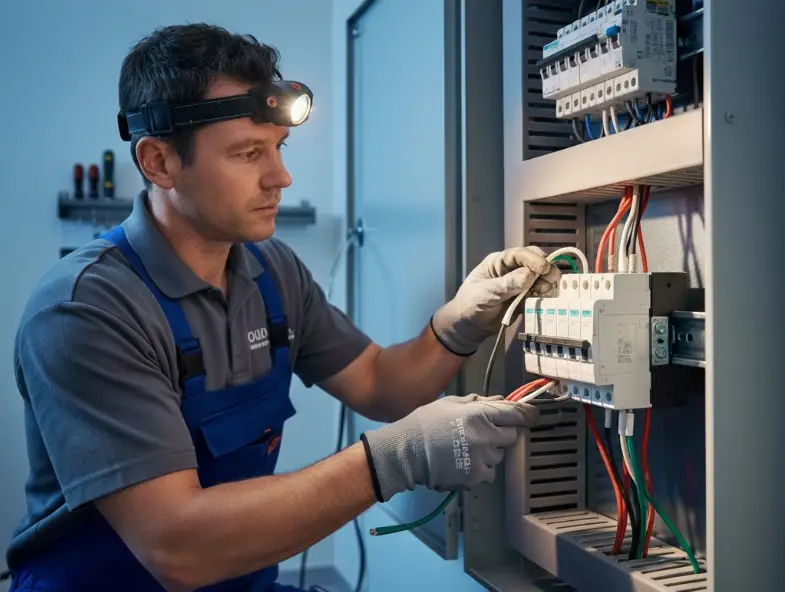
A Surge Protection Device is not a plug-and-play device. It is an essential safety device that is built into the primary distribution point of all the electrical power in your house: the electrical panel. This is why professional installation by a licensed electrician is not only advisable, but it is also essential for safety, code compliance (as set by organizations like the National Fire Protection Association), and the device’s warranty. A qualified electrician will ensure the job is done correctly.
What then is a fair and professional quote on this job? Installation fees are usually between $150 and $400 depending on where you are, the complexity of your panel, and the electrician’s charges. These labor costs cover more than just connecting a few wires. The process for a professional electrician should involve:
- Panel Assessment: A brief inspection of your breaker box to determine that there is physical space and to identify the appropriate double-pole breaker to use in the connection.
- Proper Connection: The SPD should be connected to the grid side of your home circuits, meaning it should be wired to a special two-pole breaker as near the main breaker as possible in the circuit breaker box. This makes sure that it diverts surges before they can spread to the entire panel.
- Proper Wire Management: The wires between the SPD and the breaker must be as short and straight as possible. Each inch of wire, and each bend, introduces impedance, which can slightly slow the reaction time of the device. A real pro understands that a fraction of a microsecond counts.
- Checking:Once the surge protector installation is complete, the electrician should ensure that the status indicator lights are lit and that the system is operating properly.
A quote that appears to be too good to be true is likely to be. It can imply that the individual is not licensed or insured, or intends to cut corners, which increases the risk of an electrical fire.
The Bottom Line: Your Expected All-In Cost in 2025
Adding the price of a good device and professional installation, homeowners in 2025 will likely pay between $300 and $700 as the total price for a whole house surge protector.
- At the low end ($300-$450): This would generally consist of a good quality, reputable residential-grade SPD and a simple installation in a panel that is readily accessible.
- At the higher end ($450-$700): This may include a premium or light-commercial grade SPD with a higher surge capacity, or a more complicated installation that involves relocating breakers or working with a full or older panel as part of an upgrade.
This is the sure, no-nonsense figure. It is the price of doing the job right, with a device that is constructed to last and an installation that ensures its functionality.
Beyond the Numbers: Is the Investment Worth It? An Insider’s Perspective
As manufacturers, we cannot have a cost discussion without a serious value discussion. The most destructive electrical surgesare not necessarily spectacular lightning strikes. A much more frequent danger is presented by the gradual series of smaller, internal surges. They are created daily as your appliances, like an air conditioner (AC unit), refrigerator, or washing machine, switch on and off. Your HVAC system is one of the biggest sources.
These small surges cause repetitive strain on the delicate microprocessors in your electronic devices. One incident will not lead to failure, but the aggregate of thousands of such little electrical spikes over the years will wear out the fragile circuitry. This is one of the main reasons for what is referred to as cumulative damage. That is why your otherwise flawless five-year-old TVs will suddenly stop turning on, or why your smart-home electrical devices will start malfunctioning at random. The internal parts have been compromised to the extent of collapsing.
A whole house SPD protects against large threats from external sources as well as this cumulative damage from internal surges. It is an investment in the life and dependability of every electronic appliance in your house. When you add up the cost of replacing your computers, televisions, smart appliances, and other valuable electronics, which can easily be in the tens of thousands of dollars, the few hundred dollars for a professional-grade SPD is one of the best returns you can get in your home.
An Insider’s Checklist: 4 Signs You Absolutely Need an SPD
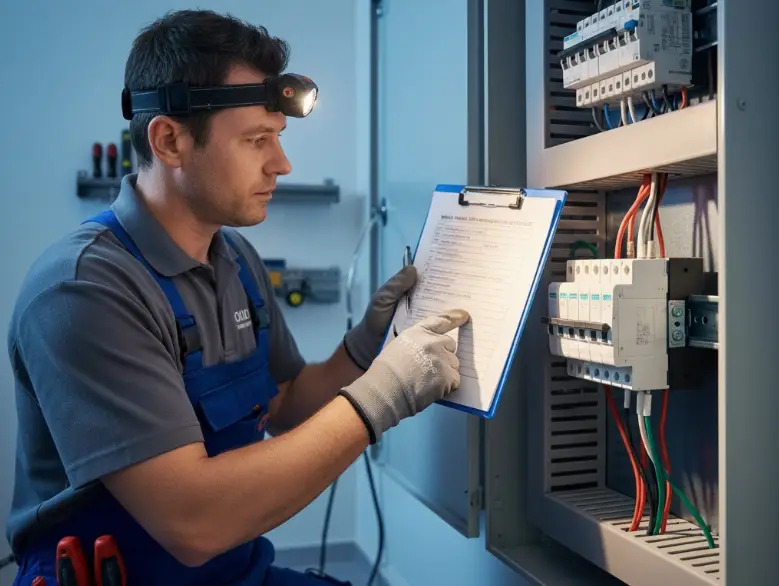
Although we think that every modern home should have an SPD, there are some reasons why it is not a “should-have” but a “must-have.” This is our internal checklist that we have created to assist homeowners in evaluating their risk profile. When you say “yes” to two or more of these, then you need to make SPD an urgent priority.
- Do you reside in an area where electrical storms are common? Florida, Texas, and Oklahoma are states where lightning is frequent. When you hear thunder, you are within range of a strike that will cause a huge surge into the power grid and endanger all the homes that are connected to it.
- Is your home filled with sensitive and costly electronics? It is not only about computers and large screen televisions. Think of modern refrigerators, digital display ovens, smart thermostats, high-efficiency HVAC systems, and EV chargers. The smarter your home is, the more vulnerable it becomes.
- Do you live in a house that is older than 20 years? Although older homes are usually constructed to be durable, their electrical wiring systems were not made to support current electronic-intensive lifestyles. They might not have the strong grounding and wiring infrastructure that offers a minimum level of resilience, making an SPD and possibly new electrical wiring even more essential.
- Do you use electronic equipment either at work or for medical needs? When you work at home or have sensitive medical equipment that is sensitive to power outages and subsequent surges, then protecting that equipment is not a question of convenience, but a necessity for your livelihood or health.
When two or more of these indicators are relevant to your house, a Surge Protective Device (SPD) should be placed at the top of your list of things to do. Power surges are not predictable yet they are inevitable and the expense of repairing or replacing damaged equipment is much higher than the initial investment in appropriate protection. Imagine an SPD as a home insurance policy on your electronics and electrical infrastructure – one that silently operates in the background to ensure that your devices, comfort, and safety are not harmed. In modern technology-driven households, the first step to peace of mind is preparedness.
DIY vs. Pro Installation: A Manufacturer’s Strong Recommendation
In the era of internet tutorials, it is easy to be tempted to DIY a project like this. We should say this in the most understandable way: this is a job for a professional. Our best advice, as the manufacturer, is never to attempt a DIY installation of a service-panel SPD.
The risks are immense. A bad connection may not only lead to the failure of the device in case of a surge event, which will make your investment worthless, but it may also pose a severe risk of an electrical fire within your main electrical panel. It will automatically cancel the product’s warranty and, in most instances, can even cancel the homeowner insurance policy in case of any damage. Theelectrical panel is the heart of your electrical system; it is a harsh place where one small error can be catastrophic. Please, leave this to the trained and licensed professionals.
How to Choose a Winning SPD (What We Look For)
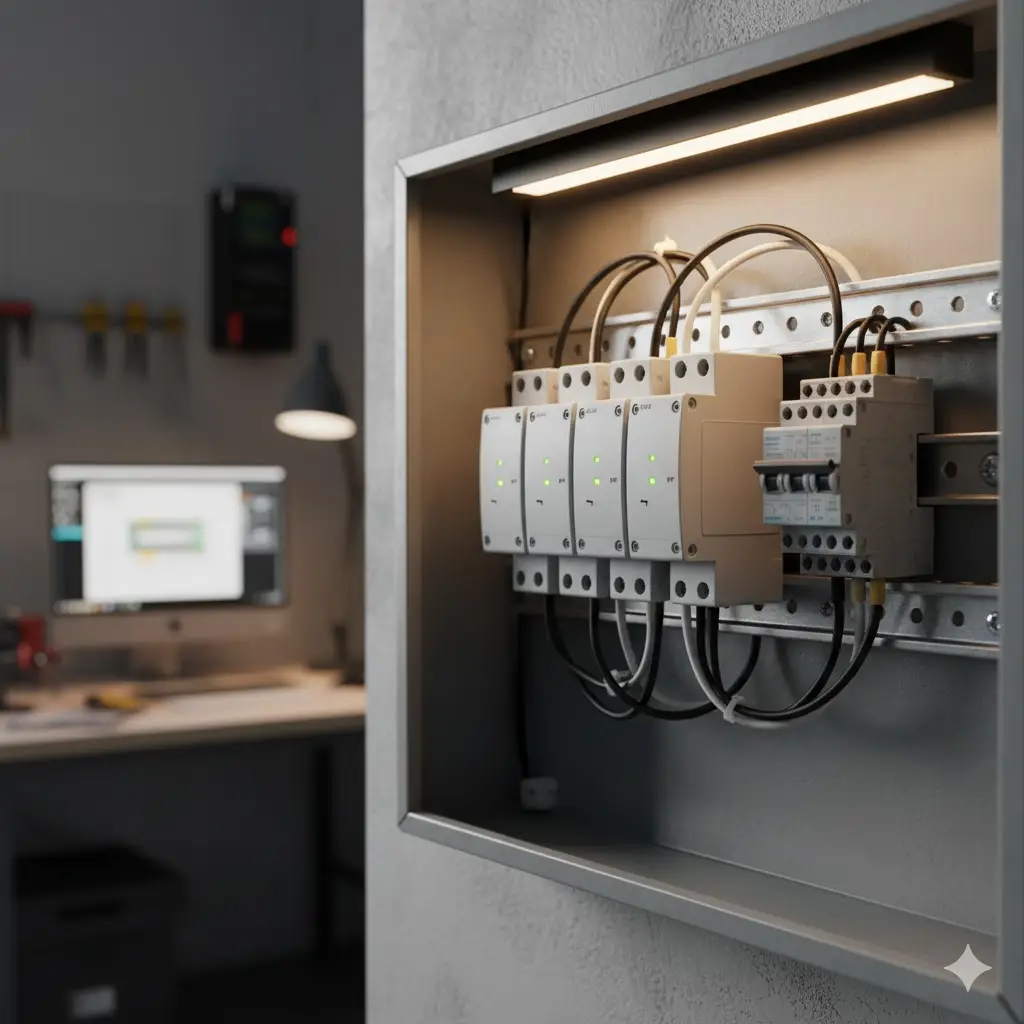
When our engineers review an SPD (Surge Protective Device), we do not pay attention to the marketing statements, but rather focus on key technical specifications that reveal the true performance of the device. These are the essential measurements you need to consider to ensure you are purchasing an efficient SPD from any brand.
–Low VPR (Voltage Protection Rating): This figure informs you of the amount of voltage that the SPD will allow to pass to your equipment during a surge. Lower is better. In a residential environment, look at a VPR of 600V or lower to ensure the best protection for your devices.
–High Surge Current Capacity (kA Rating): This is the amount of surge energy that the device can pass in one event. In a residential panel, 50kA or more is considered a strong level of protection, ensuring the device can withstand large surges without failure.
–Easy-to-understand Status Indicators: The device should have LED lights that indicate clearly that it is on and offering protection. When the lights go off, it is a definite indication that the device has served its purpose and requires replacement. This simple visual feedback helps users maintain optimal protection.
–UL 1449 Certification: This is not negotiable. It is the industry safety standard from UL (Underwriters Laboratories) for SPDs. Unless the surge protector you’re considering is UL 1449 listed, do not even think about it.
–IEC/EN 61643-11 Certification: This is the international standard for low-voltage surge protective devices. IEC/EN 61643-11 ensures that the SPD meets essential performance requirements for surge protection in residential, commercial, and industrial settings. It defines key factors such as:
- Voltage Protection Level (VPL): This helps determine how effectively the device will protect connected equipment by limiting the voltage transmitted during a surge.
- Current Capacity: Ensures that the SPD can handle significant surge events without failing.
- Endurance Testing: This standard includes rigorous tests to evaluate the SPD’s longevity and performance under normal and extreme surge conditions. It ensures the device can reliably perform over an extended period.
This certification is widely recognized across Europe and other regions, making it a critical standard for SPDs used in environments where electrical safety is paramount.
Why Our SPDs Are Built to a Higher Standard
At LSP, we believe that meeting the standard is only the starting point—not the finish line. Since 2010, we’ve been dedicated to designing and manufacturing surge protective devices (SPDs) that go beyond compliance to deliver true reliability and longevity. Every unit is produced under ISO9001 quality management and certified by TUV, CB, and CE, ensuring full compliance with IEC/EN 61643-11. Each SPD must pass rigorous internal tests—lightning current impulse, thermal stability, 48-hour salt spray, and glow-wire resistance—before it leaves our factory. For us, quality isn’t just about passing a test; it’s about earning lasting trust through engineering excellence.
Our SPDs stand above the standard because we never compromise on materials or design. The core components use LKD-brand MOVs, the same quality found in the world’s top 10 SPD manufacturers, paired with Vactech GDTsrecognized by Phoenix Contact and other global leaders. Our internal tripping device, developed over three years, isolates and extinguishes arcs at low temperature to prevent fire, while the encapsulated MOV design ensures superior moisture resistance and long-term performance. The housing uses reinforced flame-retardant PA6+GF30%, and all metal parts undergo 48-hour salt spray testing with thickened plating for enhanced durability—even in coastal or humid environments.
At LSP, our 5-year warranty isn’t a slogan—it’s a statement of confidence. We impose no minimum order quantity, because we want every customer to experience what “built to a higher standard” truly means. Each SPD withstands In = 20kA (±5 times) and Imax = 40kA (±1 time) impulse tests while maintaining stable parameters and a lifespan over twice the industry average. This is the benchmark we set not only for our customers but also for ourselves—as engineers, as manufacturers, and as people who care about safety in every home and installation. This is the LSP standard—a standard.
The Pro Secret: Achieving True Protection with “Layering”
An extensive surge protection plan involves two steps: layering. The initial step is to install a whole-house SPD (a Type 2 device) on your electrical panel. Its main purpose is to guard against large external surges, e.g. lightning or power grid variations. This is your primary protection against major electrical occurrences that may impact your entire electrical system.
The second stage deals with smaller, internal surges that are formed by the cycling of large appliances in your house. Even these smaller surges can cause stress and damage to nearby electronics. Type 3 SPDs are applied to fight this. These are the power strips or single surge protectors that are installed at the point of use of sensitive equipment such as computers, televisions and home office equipment.
A cascaded system is formed by connecting Type 2 SPDto the electrical panel and Type 3 SPDs at the wall outlets. The main SPD takes the large scale surges and the point-of-use protectors take the smaller internal surges and any additional voltage that might be passing through the primary protection. This multi-layered design provides maximum security to your precious electronics.
Our Final Take: View It as Insurance, Not an Expense
After all the analysis of components, costs, and technical specifications, our final message is simple. The most effective way to think about a whole housesurge protectoris to see it not as an expense, but as a one-time insurance premium against unexpected power surges.
You don’t buy car insurance hoping to get into an accident. You buy it for the peace of mind that comes from knowing you are protected from a catastrophic financial loss. An SPD is precisely that: a modest, one-time investment to protect the thousands, or even tens of thousands, of dollars you have invested in the electronics that make a modern home run. It works 24/7 to protect your home from a threat that is invisible, unpredictable, and increasingly common.
Now that you have the insider knowledge to choose a professional-grade SPD, the next step is to take action. Explore our series of rigorously tested Surge Protection Devices today and give your home the reliable, expert-approved protection it deserves.
